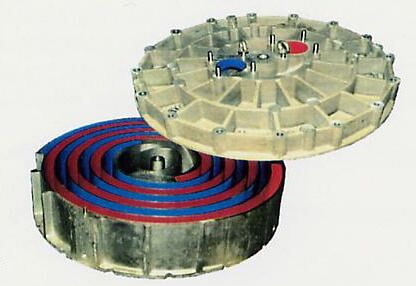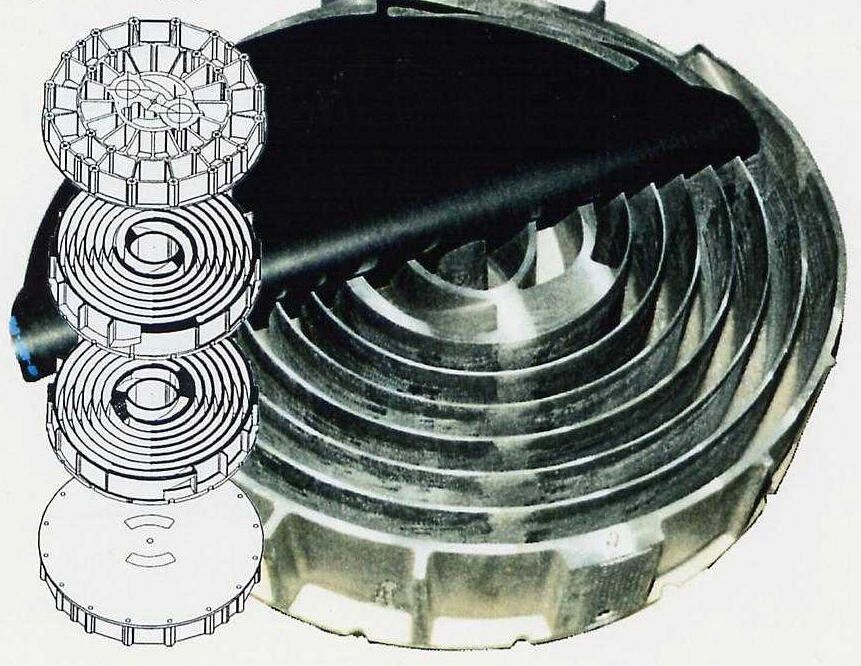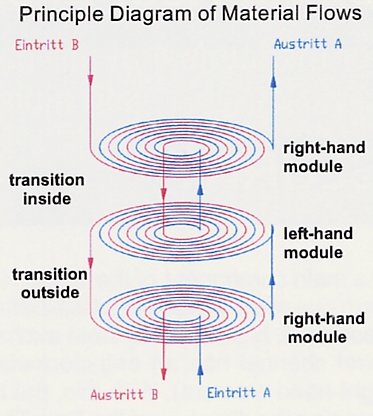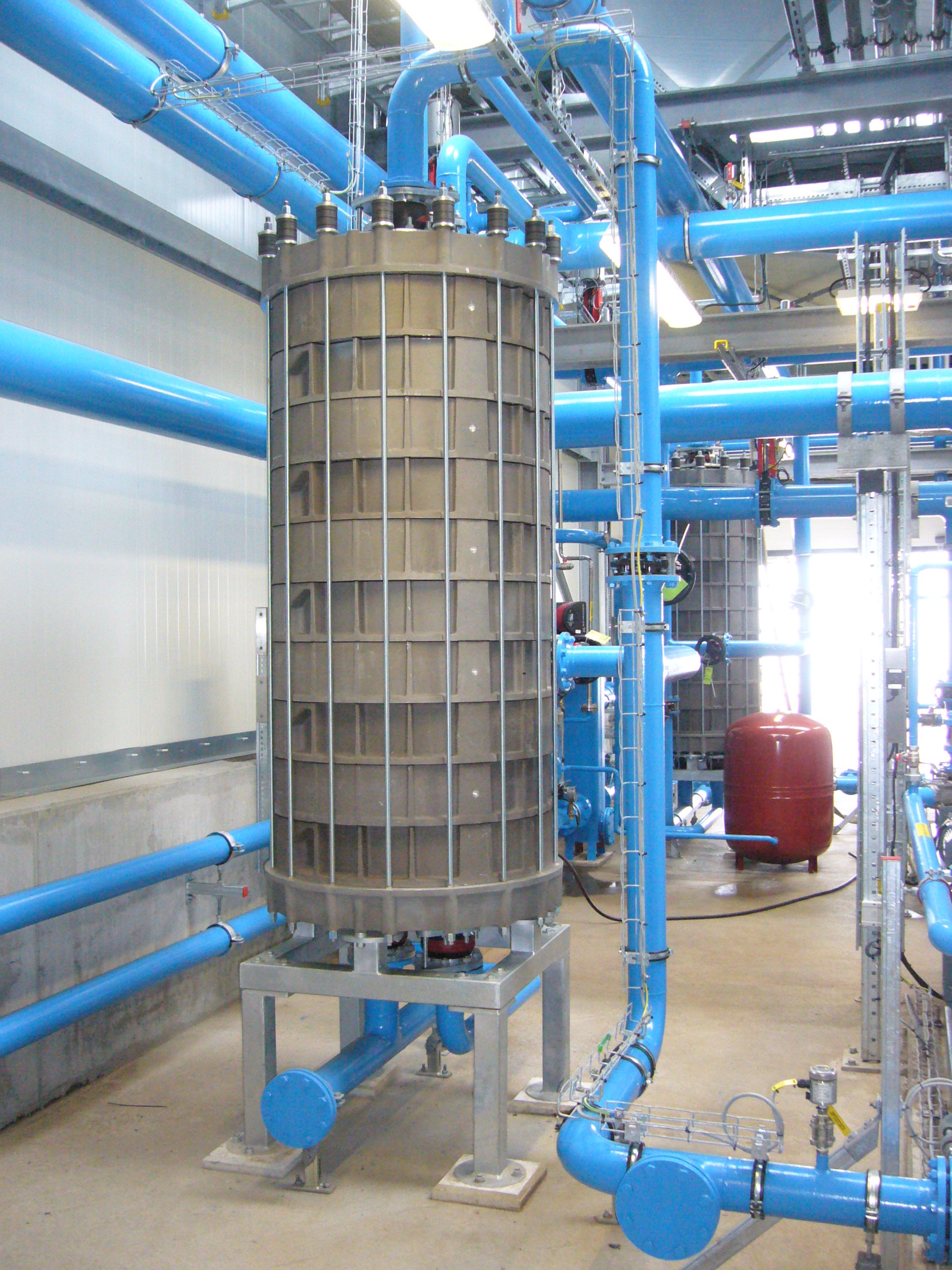
Missbach & Gaertner
Environmental Technology - Plant Design and Construction
Kohnsteinbrücke 12 - D-99734 Nordhausen - Germany
Tel. 049/36331/491100 - Fax. 049/36331/491102
Spiral Heat Exchanger
as modular design for slurry, sludge and biological mass
and for mediums that are badly contaminated and burden by solids with a distinctive fouling behavior. The main component of the Spiral Heat Exchanger is an aluminum cast member made of a no corrosive alloy. A number of left-handed and right-handed components, one on top of the other, from a compact, high-capacity heat exchanger. To avoid hard alteration of the direction of the flow, the spiral channel has an anti-clockwise curvature (left-hand element) and a clockwise curvature (right-hand element).


With this, the transition from one element to the other is performed without changing the direction of the flow. Therefore, the risk of plugging by solid particles is very low. Also, a contamination of the heat exchanging surfaces by fouling is effectively avoided by using sand-blasted aluminum cast surfaces and the spiral-shaped, curved trapezium channel with a distinctive secondary flow. It guarantees a high exchange capacity. The heat exchanger can fully be dismounted and it can be checked and cleaned at any time, if required.


These spiral heat exchangers can be especially used in sewage treatment and biogas plants for thermo treatment of slurry, sludge, biomasses and organic residual waste. Furthermore, a number of applications are also possible in food industry by using appropriate types of coating for the surfaces.
PDF document available.
top
Thermodynamics and fluid-flow characteristics
- a spiral-shaped, curved trapezium channel with a distinctive secondary flow creates increased turbulence, especially with sludgy fluids and improves the heat exchange through the wall, maximum particle size is 20 mm
- very good heat conduction by aluminum compared with steel
- aluminum - cast surface with better roughness and surface quality
- high heat transfer coefficient as a result of very good heat conduction via wall and high heat transmission through the turbulent area, u - values from 500 to 2500 W/m²/K
- the very low level of fouling (each kind of depositions) guarantees a good heat transmission and a high heat recovery at any time
- the surface area of the heat exchanger can vary between 1.5 m² and 15 m²
- volumetric flow capacity from 5 to 30 m³/h
- temperature to 90 °C; operating pressure at 4 bar
- capacity of the heat exchanger is available between 20 and 800 kW
top
Material quality
- aluminum casting aged with increased temperature that nearly has the hardness of steel
- corrosion proof and sea-water proof
- surface of aluminum casting with high resistance against organic acids in biomasses suspensions as well as anti- adhesion effects in case of fat and protein
- no cleaning of the heat exchanger walls
- temperature resistant and medium resistant sealing
- in case of problematic suspensions different surface coatings available, e.g. Teflon
top
Environmental Acceptability
- suspensions will not be contaminated by heavy metal because of abrasive wear
- operation without plugging and maintenance for suspensions up to a percentage of solids of 15 % with correct removal of harmful substances
- cleaning is generally done only by means of water
- small space requirements because of compact construction
- recycling of worn elements is done at the foundry
top
Fields of application for thermal treatment of suspensions in biogas and sewage treatment plants
- heating up to the mesophile or thermophile temperature
- sanitation at 70 °C
- heat recovery at full-flow sanitation
- pre-heating of fouling tanks
- cooling of and by means of process water and turbid water
top
Dimensions of heat exchange elements
- diameter: 980 mm
- height: 175 mm
- weight: 110 kg
- height of packages: max. 2200 mm
top
